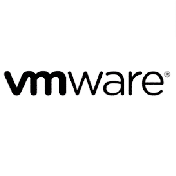Seminarinhalt
This is a deep dive course on infrastructure services configuration, increasing their level of security and windows internals. It is a must-go for enterprise administrators, security officers and architects. Delivered by one of the best people in the market in the security field –with practical knowledge from tons of successful projects, many years of real-world experience, great teaching skills and no mercy for misconfigurations or insecure solutions.
Programm
- Introduction to the Windows 10 and Windows Server 2019security concepts
- Architecture overview and terms
- Key System Componentsi
- Processes, Threads and Jobs
- Services, Functions and Routines
- Sessions
- Objects and Handles
- Registry
- Advanced Local Procedure Call
- Information gathering techniques
- Windows Debugging
- Performance Monitor
- Windows Driver Kiti
- Other useful tools
Module 2: Process and Thread Management
- Process and thread internals
- Protected processes
- Process priority management
- Examining Thread Activity
- Process and thread monitoring and troubleshooting techniques (advanced usage of Process Explorer, Process Monitor, and other tools)
Module 3: System Security Mechanisms
- Integrity Levels
- Session Zero
- Privileges, permissions and rights
- Passwords security (techniques for getting and cracking passwords)
- Registry Internals
- Monitoring Registry Activity
- Driver signing (Windows Driver Foundation)
- User Account Control Virtualization
- System Accounts and their functions
- Boot configuration
- Services architecture
- Access tokens
- Biometric framework for user authentication
Module 4: Debugging & Auditing
- Available debuggers
- Working with symbols
- Windows Global Flags
- Process debugging
- Kernel-mode debugging
- User-mode debugging
- Setting up kernel debugging with a virtual machine as the target
- Debugging the boot process
- Crash dump analysis
- Direct Kernel Object Manipulation
- Finding hidden processes
- Rootkit Detection
Module 5: Memory Analysis
- Memory acquisition techniques
- Finding data and activities in memory
- Step-by-step memory analysis techniques
- Tools and techniques to perform memory forensic
Module 6: Storage Management
- Securing and monitoring Files and Folders
- Protecting Shared Files and Folders by Using Shadow Copies
- Implementing Storage Spaces
- Implementing iSCSI
- Implementing FSRM, managing Quotas, File Screens, and Storage Reports
- Implementing Classification and File Management Tasks, Dynamic Access Control
- Configuring and troubleshooting Distributed File System
Module 7: Startup and Shutdown
- Boot Process overview
- BIOS Boot Sector and Bootmgr vs. the UEFI Boot Process
- Booting from iSCSI
- Smss, Csrss, and Wininit
- Last Known Good configuration
- Safe Mode capabilities
- Windows Recovery Environment (WinRE)
- Troubleshooting Boot and Startup Problems
Module 8: Infrastructure Security Solutions
- Windows Server Core Improvements in Windows Server 2019
- AppLocker implementation scenarios
- Advanced BitLocker implementation techniques (provisioning, Standard User Rights and Network Unlock﴿
- Advanced Security Configuration Wizard
- IPSec
- Advanced GPO Management
- Practicing Diagnostic and Recovery Toolkit
- Tools
Module 9: Layered Network Services
- Network sniffing techniques
- Fingerprinting techniques
- Enumeration techniques
- Networking Services Security (DNS, DHCP, SNMP, SMTP and other)
- Direct Access
- High Availability features: cluster improvementsandSMB﴾Scale–Out File Server)
- Network Load Balancing
Module 10: Monitoring and Event Tracing
- Windows Diagnostic Infrastructure
- Building auditing
- Expression‐based audit policies
- Logging Activity for Accounts and processes
- Auditing tools, techniques and improvements
- Auditing removable storage devices
Module 11: Points of Entry Analysis
- Offline access
- Linux BackTrack /other tools vs. Windows Security
- Unpatched Windows and assigned attacks
- Domain Controller attacks
- Man‐in‐the Middle attacks
- Services security
Zielgruppen
- Enterprise administrators
- infrastructure architects
- security professionals
- systems engineers
- network administrators
- ITprofessionals, security consultants
- other people responsible for implementing network and perimeter security
Vorkenntnisse
- to attend this training, you should have a good hands-on experience in administering Windows infrastructure
- at least 8 years in the field is recommended



